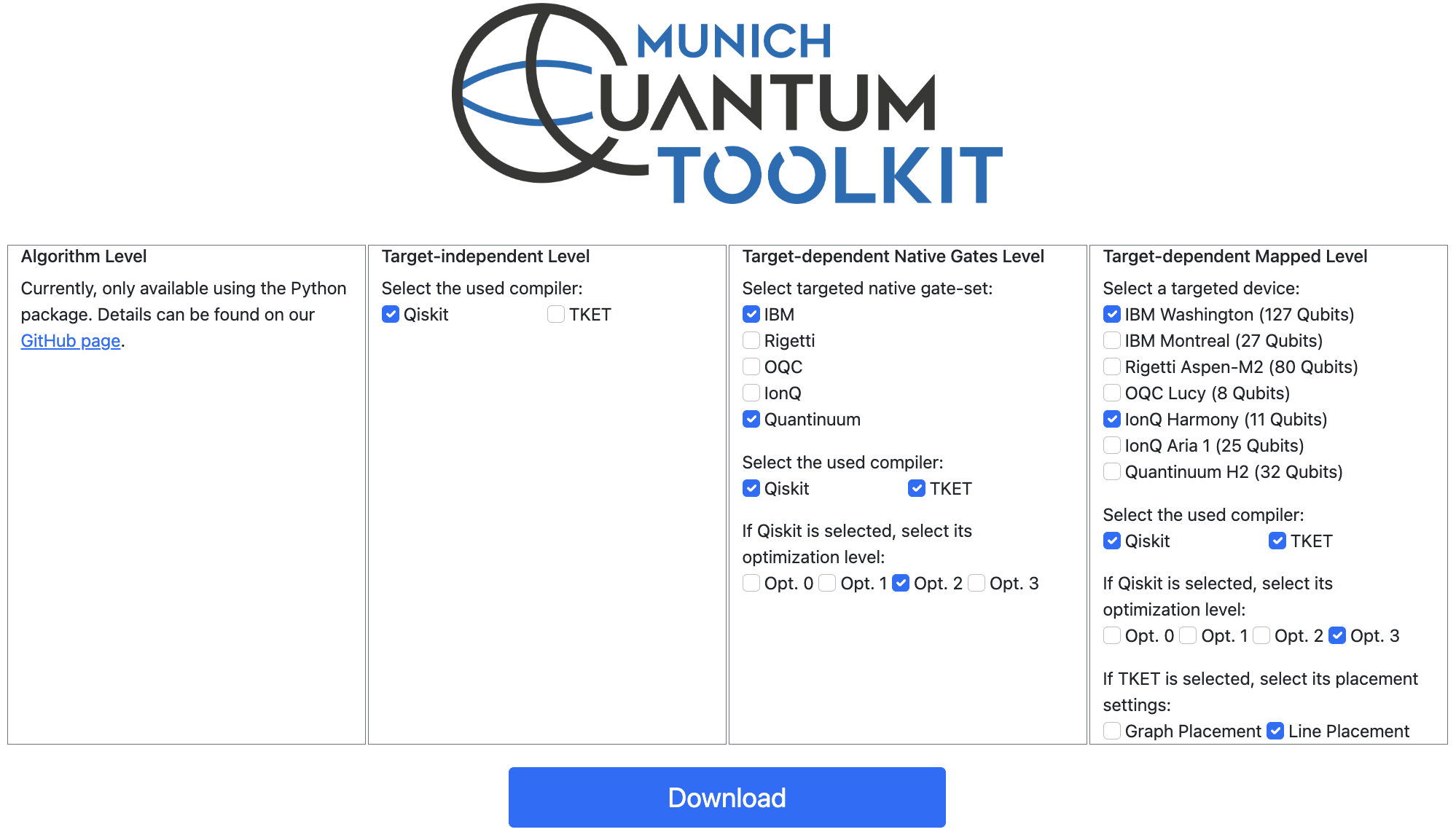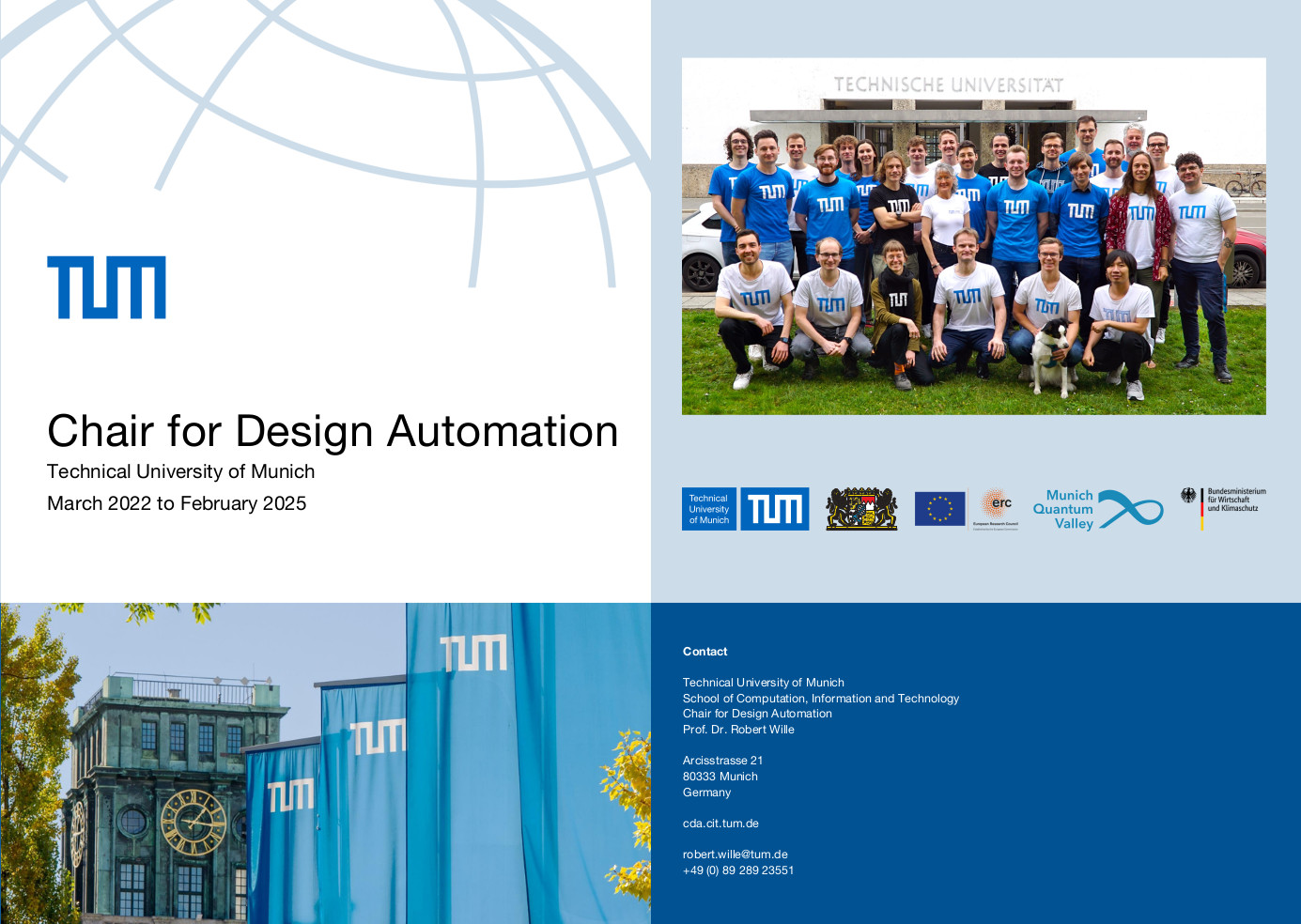
Mapping to the IBM QX Architectures
In March 2017, IBM launched the project IBM Q with the goal to provide access to quantum computers for a broad audience. This allowed users to conduct quantum experiments on 5-qubit and, since June 2017, also on 16-qubit quantum computers. In order to use these, the desired quantum functionality (e.g. provided in terms of a quantum circuit) has to properly be mapped so that the underlying physical constraints are satisfied – a complex task. This demands for solutions to automatically and efficiently conduct this mapping process. On this page, we offer corresponding solutions which satisfy all constraints given by the architecture and, at the same time, aim to keep the overhead in terms of additionally required quantum gates minimal.
More precisely, three different approaches are provided, which are both generic an can be easily configured for future architectures:
- The first one is a general solution for arbitrary circuits. Experimental evaluations show that this approach clearly outperforms IBM’s own mapping solution.
- The second one is optimized for a certain set of so-called SU(4) quantum circuits which recently have been introduced to benchmark compilers (this version won the QISKit Developer Challenge).
- The third one is a solution for obtaining mappings with minimal overhead.
- To the Solution for Arbitrary Quantum Circuits »
- To the Solution Dedicated for SU(4) Quantum Circuits »
- To the Solution for Minimal Mapping of Arbitrary Quantum Circuits »
Solution for Arbitrary Quantum Circuits
This solution addresses the problem in a broad fashion and can easily be configured for all existing IBM QX architectures but also similar ones which might be introduced in the future. It has also been fully integrated into IBM’s SDK. Experimental evaluations show that the proposed approach clearly outperforms IBM’s own mapping solution.
The methodology is integrated into the open-source MQT quantum circuit mapping tool (MQT QMAP). Note that this implementation covers only one certain aspect of the mapping procedure, namely satisfying the architectural constraints. It takes a circuit which is already decomposed into elementary operations and maps it to a given architecture. In case of questions/problems, don’t hesitate to contact us via quantum.cda@xcit.tum.de, or by creating an issue on GitHub.
The legacy implementation (including a README with instructions as well as corresponding test-files) is available at GitHub. Note that this implementation covers only one certain aspect of the mapping procedure, namely satisfying the architectural constraints. It takes a circuit in the OpenQASM 2.0 language which is already decomposed into elementary operations, maps it to the IBM QX5 architecture, and performs no pre- or post-mapping optimizations. Please note that we only provide this version for historical reasons and cannot offer support. Additionally, this legacy implementation has been incorporated into IBM’s python SDK QISKit to enable the users to directly run the mapped circuits on IBM’s quantum computers. This way, one can also benefit from IBM’s post-mapping optimizations. The implementation is available at GitHub.
Details of this approach are summarized in the paper entitled “An Efficient Methodology for Mapping Quantum Circuits to the IBM QX Architectures”.
If you use this mapping algorithm for your research, we would be thankful if you referred to it by citing the following publication:
@article{zulehner2018mapping,
title={An Efficient Methodology for Mapping Quantum Circuits to the {IBM} {QX} Architectures},
author={Zulehner, Alwin and Paler, Alexandru and Wille, Robert},
journal={IEEE Transactions on Computer Aided Design of Integrated Circuits and Systems (TCAD)},
year={2018}
}
Solution Dedicated for SU(4) Quantum Circuits
Recently a set of quantum circuits (called SU(4) quantum circuits in the following) has been introduced which turns out to constitute a worst case for existing mapping (compiling) methods. Accordingly, IBM itself used them to benchmark the performance of respective mappers (compilers) and also launched a [won the developer challenge mentioned before](https://qe-awards.mybluemix.net/#qiskitDeveloperChallengeAward">developer challenge for this type of circuits. Motivated by this, we developed a mapping approach which is dedicated to this type of circuits. This approach <a href=“https://www.ibm.com/blogs/research/2018/08/winners-qiskit-developer-challenge/).
The implementation of this approach (including a README with instructions) can be downloaded by clicking on this link (12 KB).
Details of this approach are summarized in the paper entitled “Compiling SU(4) Quantum Circuits to IBM QX Architectures”.
If you use this mapping algorithm for your research, we would be thankful if you referred to it by citing the following publication:
@inproceedings{zulehner2019compiling,
title={Compiling {SU(4)} quantum circuits to {IBM QX} architectures},
author={Zulehner, Alwin and Wille, Robert},
booktitle={Asia and South Pacific Design Automation Conference},
pages={185--190},
year={2019},
organization={ACM}
}
Solution for Minimal Mapping of Arbitrary Quantum Circuits
This solution addresses the problem that it remains unknown, whether existing methods add a minimum number of SWAP and H operations or, if not, how far they are away from that minimum - an NP-complete problem. To this end, we formulate the mapping task as a symbolic optimization problem and use the Boolean satisfiability solver Z3 to determine a minimal solution. While only applicable for circuits with a small number of qubits, experimental evaluations show that the number of operations added by IBM’s heuristic solution exceeds the lower bound obtained with the proposed approach by more than 100% on average.
The methodology is integrated into the open-source MQT quantum circuit mapping tool (MQT QMAP). Note that this implementation covers only one certain aspect of the mapping procedure, namely satisfying the architectural constraints. It takes a circuit which is already decomposed into elementary operations and maps it to a given architecture using the minimal number of SWAP and H operations. In case of questions/problems, don’t hesitate to contact us via quantum.cda@xcit.tum.de, or by creating an issue on GitHub.
The legacy implementation (including a README with instructions) is available at GitHub. Please note that we only provide this version for historical reasons and cannot offer support.
Details of this approach are summarized in the paper entitled “Mapping Quantum Circuits to IBM QX Architectures Using the Minimal Number of SWAP and H Operations”.
If you use this mapping algorithm for your research, we would be thankful if you referred to it by citing the following publication:
@inproceedings{wille2019mapping,
title={Mapping Quantum Circuits to {IBM QX} Architectures Using the Minimal Number of {SWAP} and {H} Operations},
author={Wille, Robert and Burgholzer, Lukas and Zulehner, Alwin},
booktitle={Design Automation Conference},
year={2019},
}
MQT Bench Online Tool
To evaluate the correspondingly developed methods, we additionally provide the benchmark suite MQT Bench comprising more than 70,000 benchmark circuits ranging from 2 up to 130 qubits on four abstraction levels.




